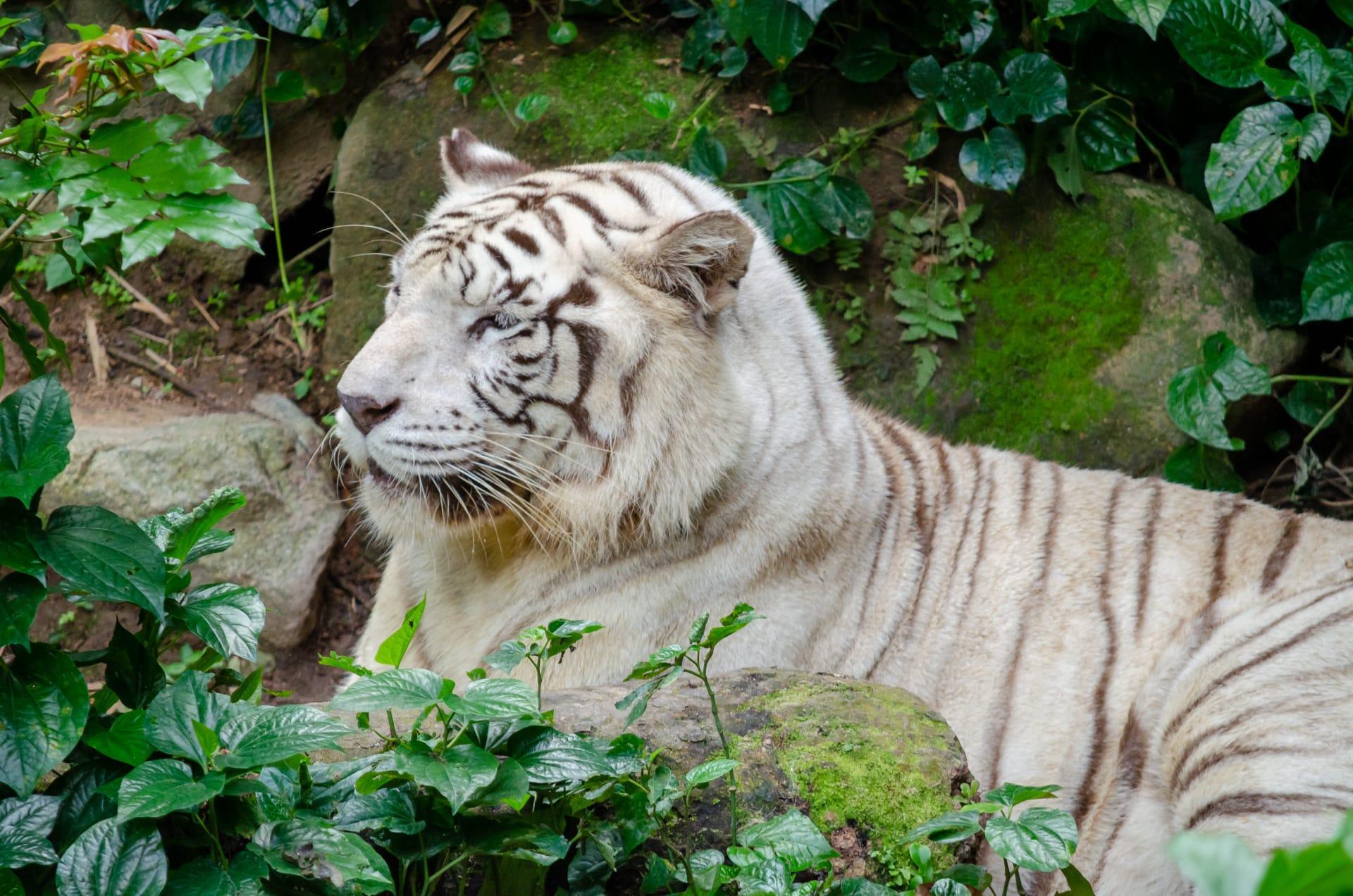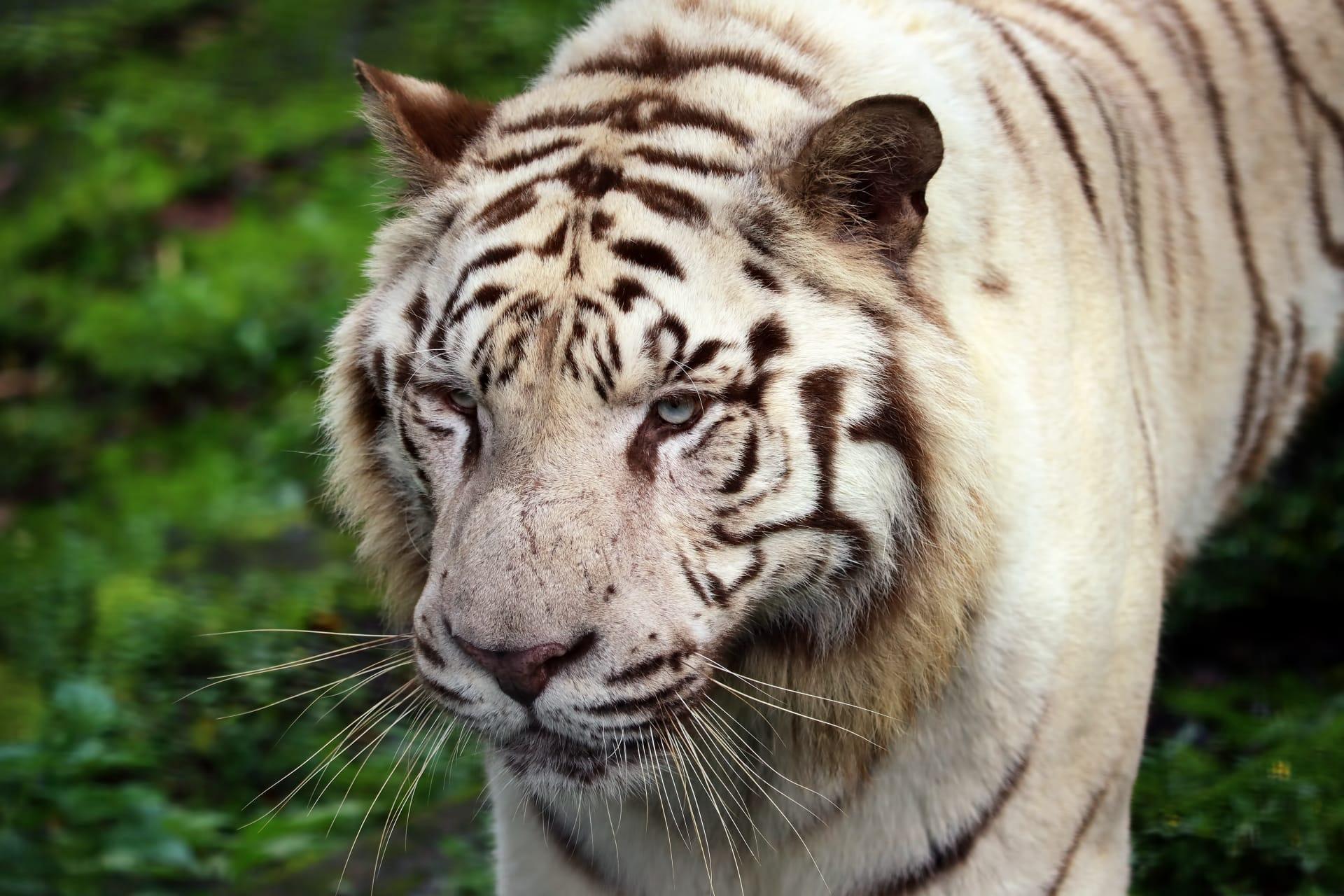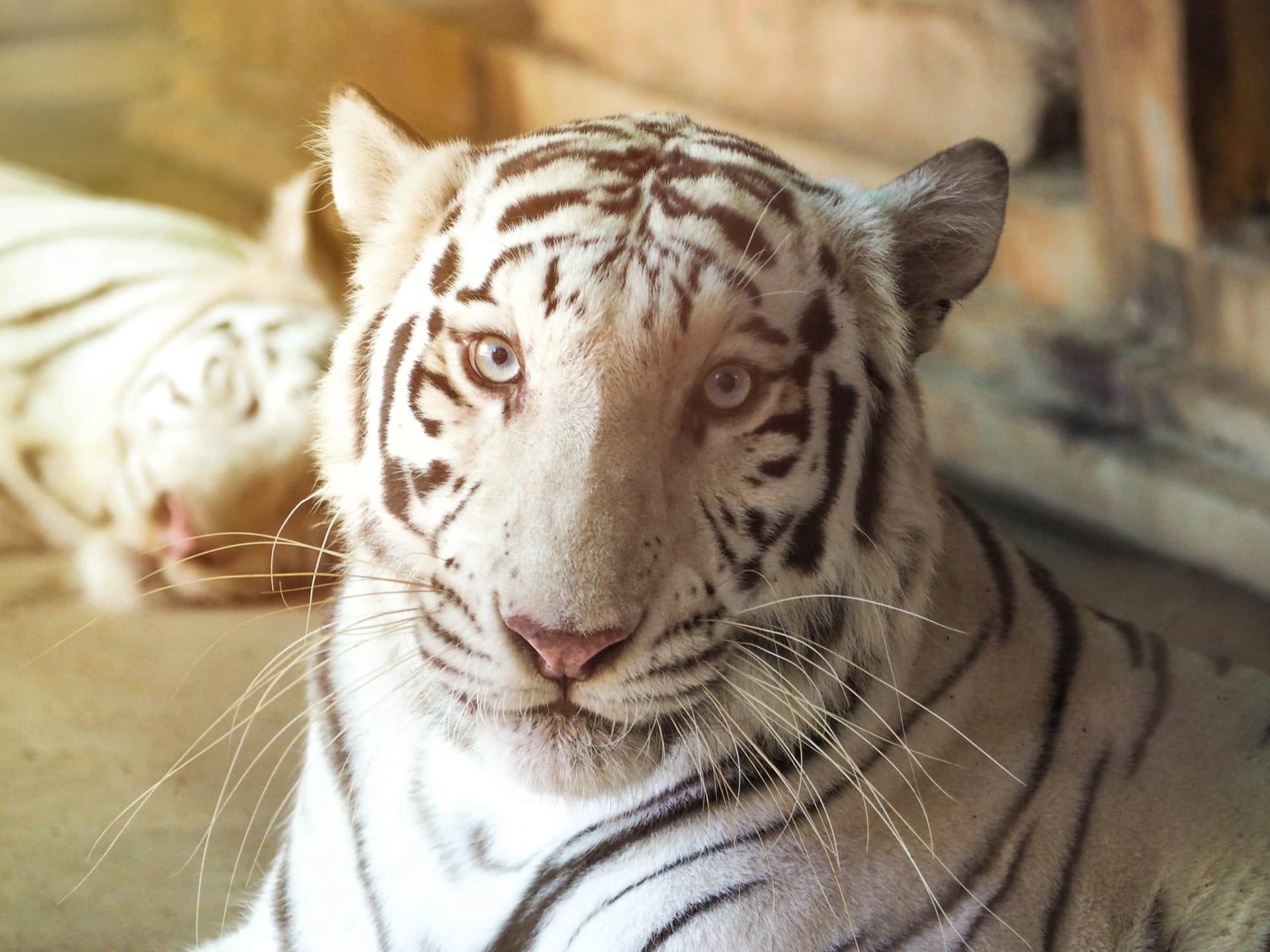White Tiger
- Home /
- Mini Encyclopedia /
- Animal /
- White Tiger
1
The white tiger, a majestic variant of the Panthera tigris species, stands out for its strikingly pale fur marked with dark stripes. This unique appearance is due to a genetic mutation affecting the pigmentation in their fur. Although often thought to be a separate subspecies, white tigers are actually Bengal tigers (Panthera tigris tigris) with this rare genetic twist. They share the same physical structure and behaviors as their orange counterparts, growing up to 10 feet in length and weighing as much as 500 pounds.
White tigers are primarily found in India, though they are extremely rare in the wild. Most of the known white tigers have been bred in captivity, contributing to their scarcity in natural habitats. Historically, these unique tigers roamed in the dense jungles and mangrove swamps of India, particularly in regions like West Bengal and Assam. However, due to excessive hunting and habitat loss, their numbers have dwindled significantly, making sightings in the wild nearly a thing of the past.

2
Question: Is the white tiger an example of an albino animal?
Answer: No, white tigers are not albino. The common misconception stems from their pale fur color. Albino animals lack melanin entirely, often resulting in pink eyes. White tigers, on the other hand, possess a genetic mutation called leucism, which reduces pigmentation in their fur. They still have melanin, which is evident in their blue or amber eyes and their black stripes. This distinction is crucial as it affects not only their appearance but also their survival capabilities and health.

3
White tigers, like all tigers, are apex predators with remarkable survival strategies. Their white fur, while a disadvantage in terms of camouflage, is compensated by their sheer strength, agility, and hunting prowess. They are solitary animals, relying on stealth and power to hunt. White tigers have keen senses, particularly their night vision, which is six times better than that of humans. This nocturnal advantage aids them in hunting prey such as deer and wild boar under the cover of darkness.
Their strong muscular build and long canines are perfect for overpowering prey. A tiger's roar, which can be heard up to 2 miles away, is not just for communication but also a display of dominance, a crucial part of their survival in the wild. Additionally, white tigers are excellent swimmers, often using water bodies to cool down or even hunt.

4
In the ecosystem, white tigers play a crucial role as top predators, maintaining the balance of their habitat. By preying on herbivores, they help control the population of these species, preventing overgrazing and ensuring a diverse and healthy ecosystem. Their presence indirectly supports vegetation growth and the overall health of the forest.
White tigers also hold significant cultural and conservation value. Their rarity and beauty have made them symbols of wildlife conservation efforts, drawing public attention to the plight of tigers and their habitats. Through conservation programs and awareness campaigns, white tigers have become ambassadors for wild tiger populations, highlighting the importance of biodiversity and ecosystem preservation.

5
Film: "The Secret Life of Tigers" (USA, 1999) offers an in-depth look into the lives of tigers, including the elusive white tiger. This documentary, filmed in India's national parks, showcases their behavior, survival strategies, and the challenges they face in the wild.
Book: "The White Tiger: A Natural History" (USA, 2010) by John Seidensticker, a renowned biologist, delves into the biology, behavior, and conservation of white tigers. It provides a scientific yet accessible exploration of these rare creatures, their role in ecosystems, and the importance of preserving their natural habitats.
Book: "Tigers of the World: The Science, Politics and Conservation of Panthera tigris" (UK, 2010), edited by Ronald Tilson and Philip J. Nyhus, includes comprehensive information on all tiger subspecies, including the white tiger. This book combines scientific research with conservation strategies, offering a detailed look at the challenges facing tigers worldwide.